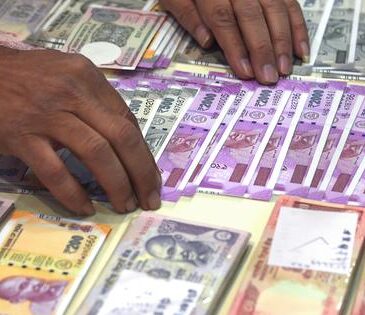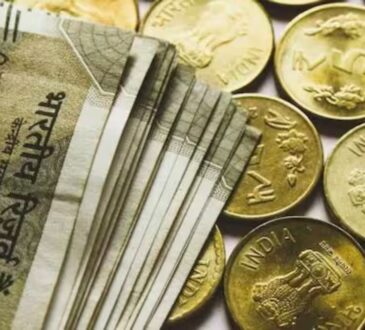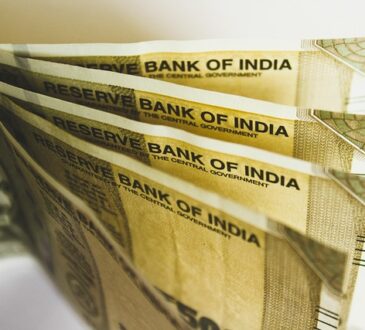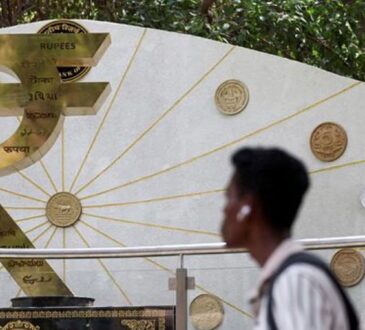INR vs USD: Rupee at 87? Experts predict fall in domestic currency on India-Pakistan conflict
The Indian rupee extended its fall on Friday, declining by 30 paise against the US dollar, as intensifying geopolitical tensions between India and Pakistan sparked risk-off sentiment in the market. Increased demand for the US dollar also dented investor sentiments.
Rupee depreciated 30 paise to open at 85.88 against the greenback on Friday. The local currency saw its steepest single-day fall in more than two-and-a-half years in the previous session and settled 81 paise lower at 85.58 against the US dollar on.
The India-Pakistan conflict, stronger dollar, rise in crude oil prices and weakness in equity markets are among the key reasons behind the fall in rupee.
India-Pakistan Conflict
Pakistan’s armed forces launched multiple attacks using drones and other munitions along the entire western border on the intervening night of May 8-9, which were “effectively repulsed”, the Indian Army said on Friday.
“During any war-like scenario investors usually flee out towards safe-haven assets, causing capital outflows from the market and weakening the currency in the short-term. However, this weakness is likely to stay for the short-term, as the war tensions ease out and strong fundamental data, Indian rupee is poised to appreciate in the medium term,” said Amit Pabari, MD, CR Forex Advisors.
Strong Dollar
Meanwhile, the dollar index, which gauges the greenback’s strength against a basket of six currencies, was trading higher by 0.01% at 100.65. The strength in the greenback is being supported by improving global trade sentiment and waning expectations of near-term rate cuts by the Federal Reserve.
“The USD/INR pair appreciated above 85.80 this week, driven by a rebound in the US dollar index and a sharp rise in crude oil prices, amid renewed optimism surrounding the US-China trade negotiations. Meanwhile, geopolitical tensions between India and Pakistan exerted additional pressure on the rupee,” said Jigar Trivedi, Senior Research Analyst at Reliance Securities.
US Treasury yields also reflected this sentiment, as the yield on the 10-year note held firm above 4.36%, marking its second straight weekly gain. Markets interpreted recent comments from Trump, suggesting potential easing of tariffs on China – as a positive signal ahead of trade talks scheduled this weekend in Switzerland, Trivedi added.
Oil Prices
Meanwhile, crude oil prices traded higher, after surging about 3% in the previous session, further pressurising the rupee. Brent crude, the global oil benchmark, rose 0.41% to $63.10 per barrel in futures trade.
The Indian stock market declined amid concerns over the ongoing India-Pakistan war. The 30-share BSE Sensex traded 809.19 points, or 1.01%, lower at 79,525.62, while the Nifty 50 fell 276.35 points, or 1.14%, to 23,997.45.
Rupee Outlook
Looking ahead to next week, currency markets will focus on key macroeconomic releases, including Consumer Price Index (CPI) data from both India and the United States, as well as US retail sales figures. Additionally, any developments in US-China trade discussions and the ongoing tensions between India and Pakistan will be closely watched.
Analysts expect the weakness in rupee to continue in the short term due to the India-Pakistan conflict.
“We expect further depreciation in the rupee, with the USD/INR pair potentially testing the 86.50 level. The short-term outlook remains bullish for the pair,” said Jigar Trivedi.
According to Amit Pabari, the rupee is likely to face strong resistance around the 85.80 – 86.20 levels, with an 80% probability that these levels will be defended.
“However, a breach above this range — though less likely — could pave the way towards the 86.80 – 87.00 levels,” said Pabari.
Disclaimer: The views and recommendations made above are those of individual analysts or broking companies, and not of Mint. We advise investors to check with certified experts before making any investment decisions.




